Amidst a changing religious climate, Baroque artists and architects set out to spark awe and amazement in 17th-century Rome. A goal their work still achieves, 400 years later.
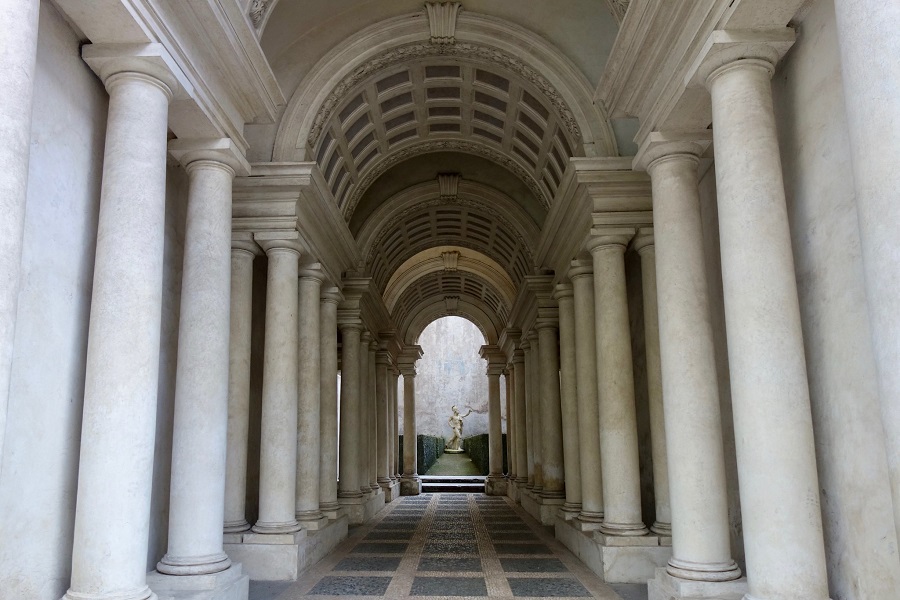
An optical illusion at Spada Gallery (Photo: sonse via Flickr / cc by-2.0)
In response to the Protestant Reformation in 16th-century Europe, the Catholic Church went through a process of renovation which was soon reflected in the architecture and arts of Italy. In Rome, masters such as Gian Lorenzo Bernini and Francesco Borromini were the leading figures of the new Baroque movement. Strict codes inherited from the Classics were eased in favour of spectacular effects and creative licence, aimed at a stronger engagement with the public. By the end of the 17th century, the Eternal City had been redesigned with theatrical urban spaces, awe-inspiring art and daring architecture, which today are still among its most defining attractions.
Fountain of the Four Rivers
It took some convincing for Pope Innocent X to assign the central fountain of Piazza Navona to Bernini. But the pope was certainly pleased with the idea of having his own emblem set on top of the replica Egyptian obelisk which soars above the great rivers of the world; most likely designed to symbolise the triumph of the Church over the four continents to which it points. Walking around the fountain, the dazzling amount of detail makes it feel like a moving picture, revolving around four main characters who represent rivers. It is often erroneously believed that the River Plate character is covering its own eyes out of spite for the opposite church of Sant’Agnese in Agone, which was designed by Bernini’s arch rival Borromini. However, this is historically impossible as that church was built after the completion of this fountain.
Piazza Navona, 00186 Roma
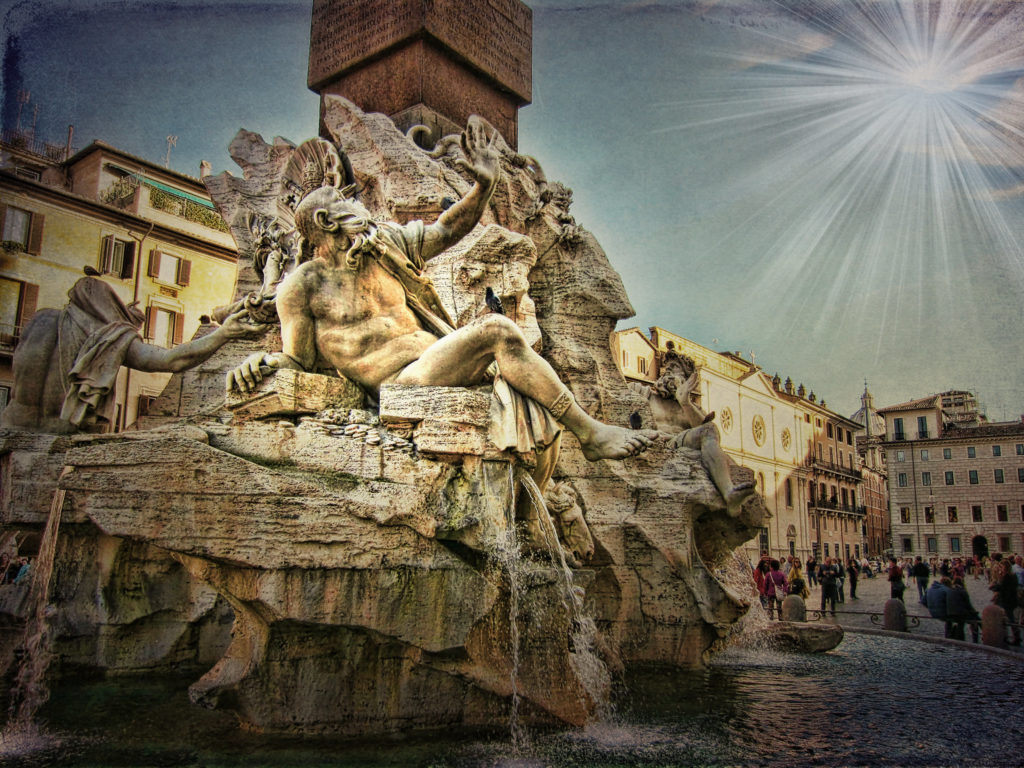
The River Plate covering its eyes (Photo: Nick Kenrick via Flickr / cc by 2.0)
The Triumph of Divine Providence
As a celebration of Pope Urbano VIII, and the Barberini family he belonged to, this monumental fresco is considered the manifesto of Baroque art. Pietro da Cortona painted it between 1632 and 1639, putting together the many stylistic elements already expressed by the new cultural wave. The layout is free from traditional patterns and each scene conveys exceptional dynamism, filled with celebratory allegories of the commissioning family. Decorating the main hall of Palazzo Barberini, the fresco is the second largest in Rome after the Sistine Chapel. The palace itself is a Baroque landmark, as well as many of the works displayed in its collections.
Via delle Quattro Fontane 13, 00187 Roma
St Peter’s Baldachin
Merging sculpture with architecture, this monumental canopy embodies Baroque taste at its best. It was designed by Bernini in a rare collaboration with Borromini (before their caustic rivalry developed), as well as with the assistance of many other artists and architects. Impressively, the large scale doesn’t impede its harmony and lightness, thanks to the masterful use of different structural and decorative elements. Among these, the spiralling columns are the most distinctive. Making a spectacular monument out of a processional accessory was certainly a novel idea at the time; let alone using it to mark the focal point of the church, while directing the viewer’s attention towards the high altar and the resting place of St Peter.
Piazza San Pietro, 00120 Città del Vaticano
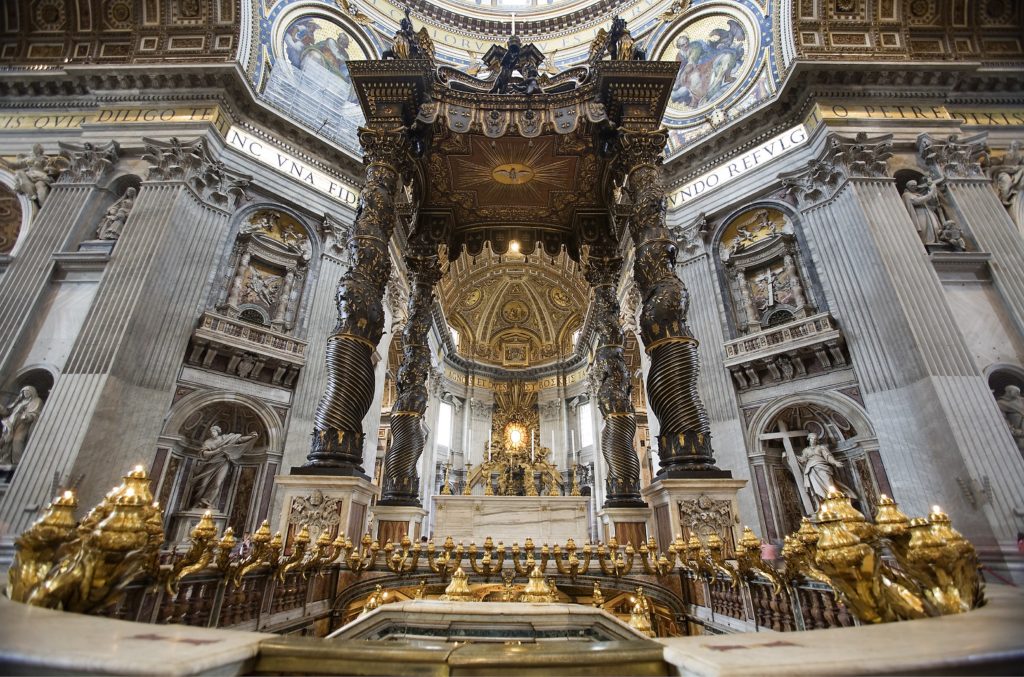
The Baldachin, placed directly under the dome of St Peter (Photo: Jorge Royan via Wikimedia / cc by-sa 3.0)
St Peter’s Square
The makeover of St Peter’s Square came in the wake of the Counter-Reformation. The new urban space was to link the Vatican to Rome and the rest of the world, reflecting a more open Catholic Church. It had to be majestic, but also functional. With this in mind, Bernini conceived of two grand colonnades topped by 140 statues, which would proclaim this place the centre of Christianity. These arms of the basilica open around a large oval square, as if to embrace the mass of worshippers both literally and figuratively. However, the 20th-century Via della Conciliazione changed the mode of access to the square significantly.
Piazza San Pietro, 00120 Città del Vaticano
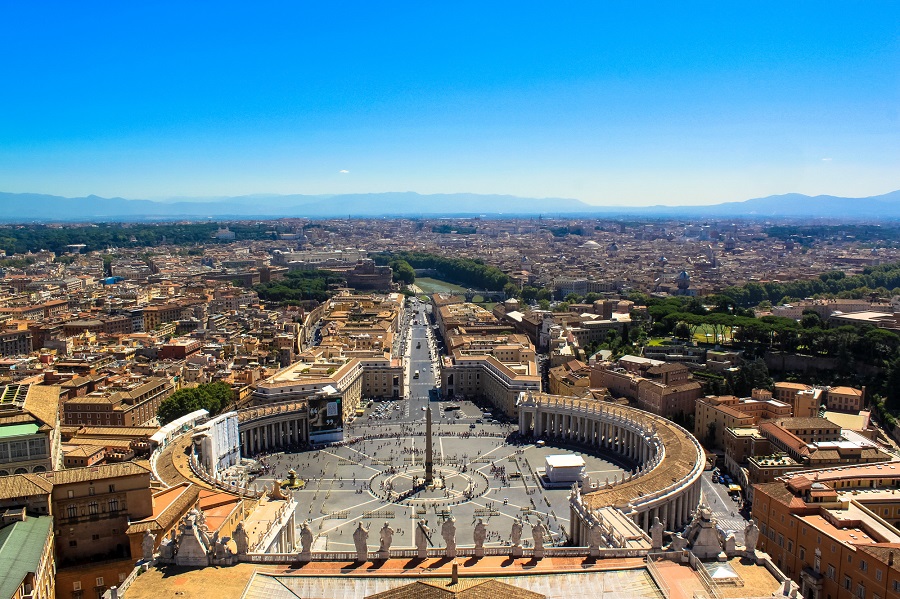
View over St Peter’s Square (Photo: Andy Hay via Flicker / cc by 2.0)
Colonnade at Spada Gallery
This art gallery is home to a fine selection of Baroque paintings, displayed as they would have been in a 17th-century collection. At the end of it, visitors are in for an optical illusion which perfectly represents the taste for special effects that was in vogue at the time. The use of forced perspective in the Secret Garden leads them to believe the eight-metre colonnade is nearly five times longer, directed towards a seemingly life-sized statue which is in fact only 60 cm in height. This was yet another Baroque gem signed by Borromini. Also noteworthy is the Mannerist facade of the palace, one of the most richly decorated in Rome.
Piazza Capo di Ferro 13, 00186 Roma
Church of Sant’Ivo alla Sapienza
Designing the new church for La Sapienza University, Borromini was faced with the challenge of incorporating pre-existing buildings. He turned the awkward space available into a sleek yet extravagant structure, so inventive it was hailed as one of his most accomplished projects. If features such as the star-shaped layout and concave facade feel original today, they were certainly sensational at the time, found elsewhere in Baroque architecture but rarely combined in such a compelling manner. The dome is the most impressive piece, culminating in an unprecedented corkscrew lantern.
Corso del Rinascimento 40, 00186, Roma
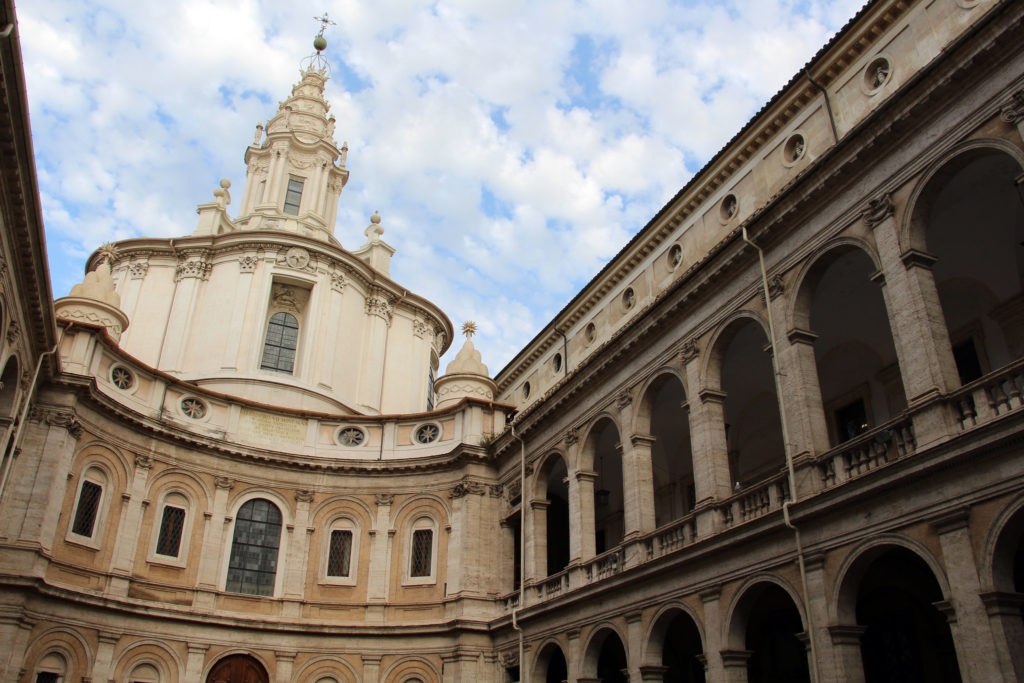
Sant Ivo alla Sapienza (Photo: Fred Romero via Flickr / cc by-sa 2.0)
Caravaggio paintings at San Luigi dei Francesi
Caravaggio preceded and greatly influenced Baroque art. One of the best places to see his paintings in Rome is San Luigi dei Francesi. This church celebrates the history and religious figures of France, but the fifth chapel to the left takes centre stage. The three Caravaggio paintings hanging here include one of his masterpieces ‘The Calling of Saint Matthew’, alongside two other scenes dedicated to the same saint. While visiting the church, it’s worth taking a closer look at the second chapel to the right too, which displays works by Raphael, Guido Reni and Domenichino.
Piazza di S. Luigi de’ Francesi, 00186 Roma
The Ecstasy of Saint Teresa
Inside the church of Santa Maria della Vittoria, Bernini drew on his skills as a scenographer to turn the Cornaro Chapel into an actual theatre. This way, the private experience of Saint Teresa is performed for the public, as well as for members of the commissioning family. Golden light comes in from above through hidden yellow windows, flooding the scene with a mystical aura. The exceptionally-crafted dress is creased in a way that was revolutionary at the time, in contrast with the smooth surface of the cherub. Pulling the dress aside, he is about to repeatedly transfix Teresa in the heart. The erotic charge of the scene peaks on the saint’s facial expression, ambiguously floating between sensual lust and transcendent rapture.
Via Venti Settembre 17, 00187 Roma
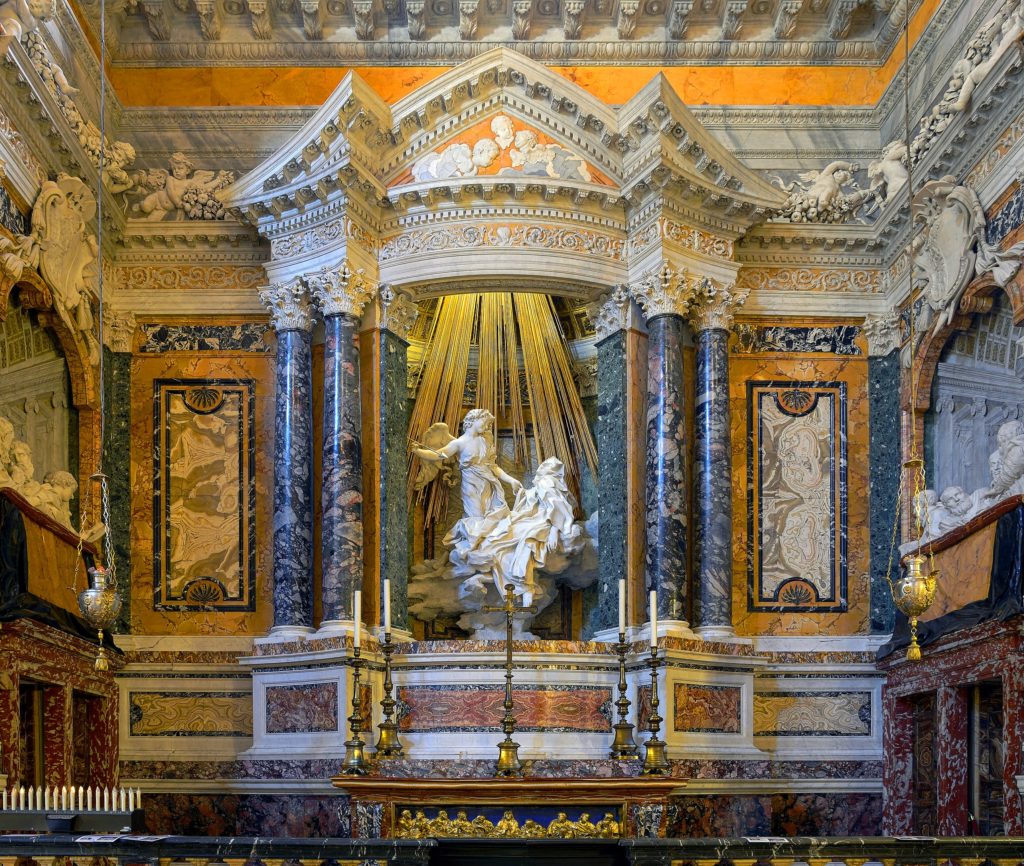
The Ecstasy of Saint Teresa (Photo: livioandronico2013 via Wikimedia / cc by-sa 4.0)
Church of San Carlo alle Quattro Fontane
This church is also known as ‘San Carlino’ because of its tiny size, similar to that of just one single pillar supporting the dome of St Peter. But the project was entrusted to Borromini, who was known for making a virtue out of necessity. He shaped the cloister in a way that feels light and airy, where visitors are likely to forget about the narrow space they’re in. Convex and concave sections alternate on the facade, creating a wavy structure reinforced by two orders of columns. The Swiss architect designed this church on a small budget too, per the means of the Trinitarian friars who commissioned it.
Via del Quirinale 23, 00187 Roma
Basilica of Sant’Andrea della Valle
The construction of this church started before the coming of Baroque, but continued well into the 17th century. Completed in 1665, the facade set new standards in the period’s architecture, achieving a chiaroscuro effect through its double order of columns and fragmented structure. The frescoes by Lanfranco and Domenichino stand out among the interior design and decorations. Work from artists and architects such as Bernini, Maderno and Carlo Fontana also enrich the church. At the time, the dome was second in size only to St Peter’s.
Corso Vittorio Emanuele II, 00186 Roma
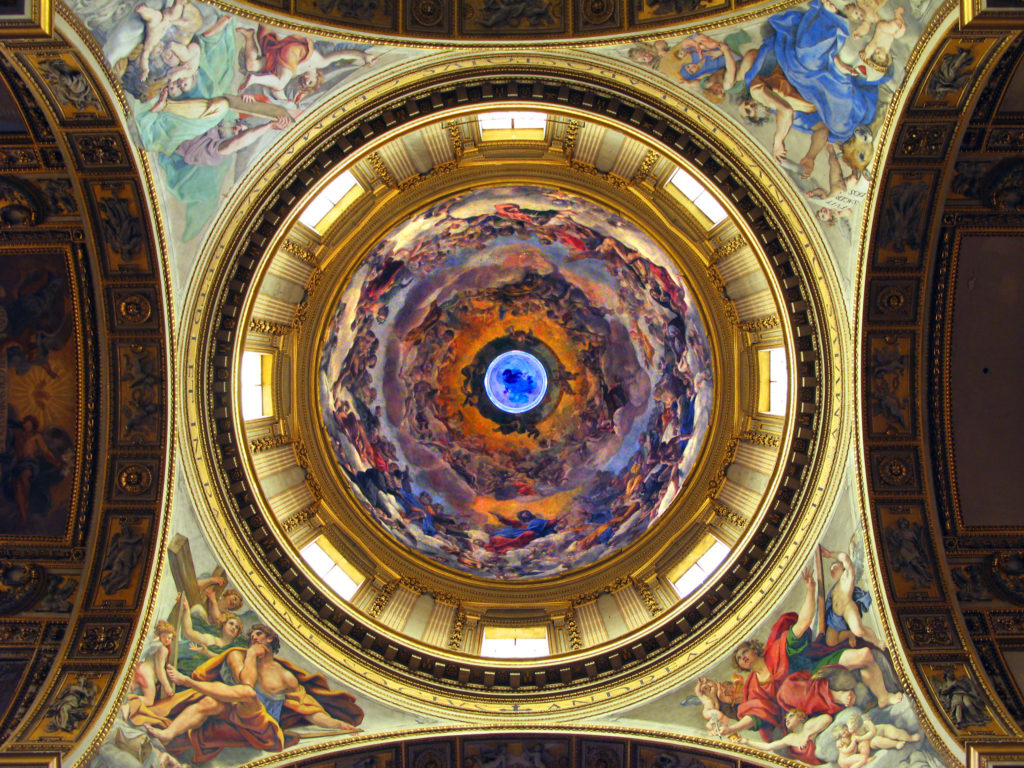
The frescoed dome at Sant’Andrea della Valle (Photo: dimitri b. via Flickr / cc by 2.0)